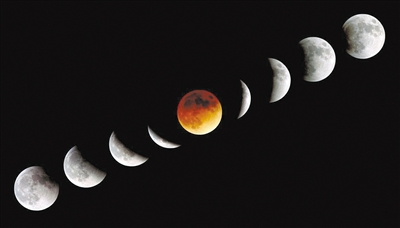Whether it was believed to have been a big ball of cheese, home to the men in the moon, or possess the power to turn people into werewolves, the moon has been a perpetual source of wonder from ancient time to today. Just one quarter the size of the Earth, the moon is small compared to other more spectacular bodies in the universe. But since it's only 240 thousand miles away, a relatively short distance when compared with the vastness of space, nothing looms larger in the night sky.

The moon orbits the earth like the earth orbits the sun. Since the moon doesn't shine on its own but only reflects light from the sun, we see more or less of it during its monthly revolution depending on its position. We call these varying views--phases. When the moon is on the far side of the earth away from the sun, the moon is fully illuminated or full. As the moon travels around the earth, we can only see the sunlight falling on part of it resulting in crescent moons and half moons. When the moon is directly between the earth and the sun, light falls on the far side of the moon, blocked from earth's view, the moon is dark or new. It takes about 29 days for the moon to complete its cycle. On rare occasions a full moon passes through the earth's shadow and the sun's light is blocked. This is called a total lunar eclipse. The moon has quite an effect on our planet. As earth turns the moon's gravity tugs on our oceans creating the tides. The tidal forces have curved our planet's coastlines, buoyed its polar icecaps and influenced the rhythm of life. Our nearest celestial neighbor is a lot more than a beautiful view.












